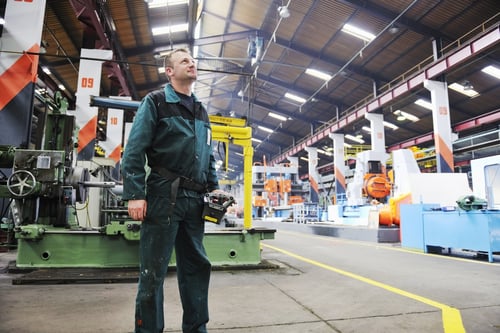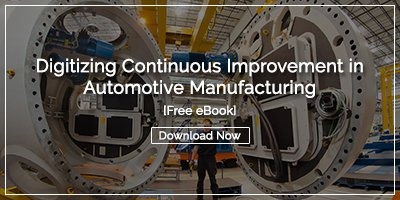 Continuous improvement, often called Kaizen, is a fundamental concept in manufacturing that emphasizes the ongoing, incremental enhancement of processes, products, and operations. It involves a culture of constant vigilance for inefficiencies and a commitment to making minor, regular improvements. In manufacturing, continuous improvement is vital as it leads to increased productivity, higher product quality, reduced waste, and cost savings.
Continuous improvement, often called Kaizen, is a fundamental concept in manufacturing that emphasizes the ongoing, incremental enhancement of processes, products, and operations. It involves a culture of constant vigilance for inefficiencies and a commitment to making minor, regular improvements. In manufacturing, continuous improvement is vital as it leads to increased productivity, higher product quality, reduced waste, and cost savings.
Lean Manufacturing is a process improvement methodology for achieving continuous improvement in various industries. The core idea behind Lean is to eliminate waste and maximize value by relentlessly focusing on customer needs, optimizing processes, and empowering employees. By identifying and eliminating non-value-added activities, reducing inventory, and enhancing efficiency, Lean continuous improvement aims to create streamlined, agile, and highly responsive operations.
This article will explore the concept of continuous improvement within the framework of lean systems in the manufacturing context.
What is Lean Continuous Improvement?
Lean Continuous Improvement, often referred to simply as Lean, is a systematic and holistic approach to achieving ongoing enhancements in processes, products, and operations. Rooted in the principles of Lean Manufacturing, it emphasizes the elimination of waste and the relentless pursuit of efficiency, quality, and value to customers.
Lean manufacturing traces its origins to the Toyota Production System (TPS), developed by Toyota after World War II. Facing resource constraints and the need for rapid recovery, Toyota's leadership, including Taiichi Ohno and Shigeo Shingo, pioneered a revolutionary approach to manufacturing. TPS aimed to eliminate waste, enhance efficiency, and maximize value for customers. It introduced concepts like just-in-time production, where materials are delivered precisely when needed, and autonomation, which involves building machines to detect defects and stop automatically. Combined with a relentless focus on continuous improvement and respect for people, these principles formed the foundation of Lean manufacturing. Over time, the Toyota Production System's success led to its adoption by companies worldwide, transforming manufacturing practices and setting the stage for Lean to become a globally recognized and highly influential methodology in various industries.
At its core, Lean Continuous Improvement is characterized by a commitment to incremental changes, often driven by employee insights and feedback. It creates a continuous learning and adaptation culture, where every aspect of an organization is scrutinized for potential improvements. By applying Lean principles, organizations can reduce costs, minimize lead times, enhance product quality, and respond more effectively to customer demands.
What are the Five Principles of Lean Manufacturing?
Lean Continuous Improvement, often supported by Lean software, is not a one-time project but an ongoing philosophy that helps organizations remain competitive and adaptable in a rapidly evolving business landscape. While many variations of Lean manufacturing principles exist, the commonly recognized framework is based on five core lean process improvement priorities
Value
The first step is clearly defining what is valuable from the customer's perspective. Understanding customer needs and expectations helps identify where value is created in processes and where waste occurs.
Value Stream
Once value is identified, the following principle involves mapping the entire value stream or the sequence of steps and processes required to deliver a product or service. This helps visualize the flow of materials and information and identify areas of waste or inefficiency.
Flow
The goal is to create a smooth and continuous flow of work by eliminating waste, bottlenecks, and interruptions in the value stream. Achieving flow requires redesigning processes and workflows to minimize waiting times, delays, and excessive handoffs.
Pull
Pull systems are implemented to ensure that work is produced only when there is demand rather than pushing work through the process. Pull systems help in reducing overproduction and excess inventory.
Perfection
Continuous improvement is an ongoing process that aims for perfection. Organizations should encourage a culture of continual problem-solving and innovation to eliminate waste, enhance quality, and continuously improve processes.
These principles, often associated with Lean Thinking, guide organizations in pursuing efficiency, quality, and customer satisfaction through continuous improvement efforts.
What's the Difference Between Lean Manufacturing and Continuous Improvement?
Lean Manufacturing and Continuous Improvement are related concepts, but they differ in their scope and focus:
Lean Manufacturing is a specific methodology or approach that optimizes the manufacturing processes within an organization. It is centered around reducing waste, improving efficiency, and delivering customer value. Lean Manufacturing uses tools and techniques like 5S, Kanban, and Value Stream Mapping to streamline production, reduce lead times, and enhance product quality. While it includes a vital element of continuous improvement, its primary focus is on making manufacturing processes leaner and more efficient.
Conversely, continuous improvement is a broader philosophy that can be applied to various aspects of an organization, not just limited to manufacturing. It involves an ongoing commitment to identifying and addressing inefficiencies, enhancing processes, and driving incremental improvements in all business areas. Continuous Improvement encompasses a range of methodologies, including Lean, Six Sigma, Kaizen, and others. It is not limited to manufacturing but can be applied to customer service, logistics, product development, and more. It fosters a culture of constant learning, adaptation, and evolution to achieve excellence over time.
In short, Lean Manufacturing is a subset of Continuous Improvement, focusing specifically on improving manufacturing processes. In contrast, Continuous Improvement is a broader organizational approach that extends beyond manufacturing to all aspects of an organization's operations.
The Benefits of Lean Continuous Improvement
Lean management is widely used because it brings organizations of all types several substantial, long-term benefits, including:
Operational Excellence
Lean Manufacturing leads to operational excellence by relentlessly focusing on reducing waste, optimizing processes, and delivering value to customers. One exemplary case is Amazon. Amazon has employed Lean principles to achieve operational excellence and revolutionize e-commerce. The company's core success lies in optimizing its supply chain and fulfillment processes. Amazon's emphasis on minimizing waste, reducing lead times, and enhancing efficiency has enabled it to deliver products to customers with unprecedented speed and reliability. Their efficient warehousing and inventory management systems and advanced data analytics allow precise demand forecasting and inventory stocking. Moreover, Amazon continuously invests in automation and robotics to streamline order picking and packing. These Lean practices have propelled Amazon to the forefront of e-commerce and set new standards for operational excellence in the industry, exemplifying the transformative impact of Lean principles in a rapidly evolving digital marketplace.
Cost Reduction
Lean Manufacturing reduces costs by relentlessly focusing on eliminating waste and optimizing processes. Organizations can significantly cut operating expenses related to storage, carrying costs, and resource allocation by minimizing excess inventory, reducing lead times, and streamlining workflows.
United Technologies Corporation (UTC) applied Lean principles to their subsidiary, Pratt & Whitney, a jet engine manufacturer. UTC's focus on Lean Manufacturing led to innovative changes in engine production, including developing the Pratt & Whitney Geared Turbofan (GTF) engine. By optimizing manufacturing processes and incorporating Lean principles into the design, the GTF engine achieved a remarkable 16% reduction in fuel consumption and a 50% reduction in noise emissions compared to previous engines. This cost-effective, fuel-efficient engine reduced airline operating costs. It contributed to environmental sustainability, underscoring how Lean Manufacturing can lead to substantial cost savings and innovation in high-tech industries.
Lead Time Reduction
Lean Manufacturing can substantially reduce lead times by eliminating non-value-added activities, streamlining workflows, and minimizing waste throughout the production process. By implementing just-in-time production, materials, and components are delivered precisely when needed, eliminating the need for extensive inventories and long waiting periods. Value stream mapping helps identify bottlenecks and areas of inefficiency, enabling organizations to redesign processes for smoother and more efficient operations. Cross-functional teams, a hallmark of Lean, collaborate to identify and resolve issues promptly, further reducing delays.
Enhanced Product Quality
Lean Manufacturing enhances quality through rigorous process optimization and a culture of continuous improvement. By reducing waste and inefficiencies, Lean principles decrease the likelihood of errors and defects in the production process. Value stream mapping and error-proofing techniques help identify potential sources of defects and address them proactively. Moreover, Lean fosters a culture where employees actively monitor and improve quality, empowering them to detect issues early and promptly implement corrective actions. The result is a consistent focus on delivering high-quality products, reducing defects, and enhancing customer satisfaction, making Lean Manufacturing a cornerstone for achieving and maintaining superior product quality.
One notable example of this approach is Harley-Davidson, the renowned motorcycle manufacturer. In the early 1980s, Harley-Davidson faced intense competition from Japanese motorcycle manufacturers and was on the brink of bankruptcy. They adopted Lean thinking principles to revitalize their operations. By implementing just-in-time production, value stream mapping, and continuous improvement, they streamlined their manufacturing processes, reduced excess inventory, and eliminated waste. This substantially reduced production costs, increased production efficiency, and improved product quality. Harley-Davidson's successful Lean transformation saved the company and positioned it as an industry leader, demonstrating how Lean Manufacturing can lead to significant quality improvement and renewed competitiveness.
Realizing the Future of Manufacturing Through Continuous Improvement and Lean Systems
The future of the manufacturing industry is marked by the continued evolution and critical importance of continuous improvement and Lean systems, with emerging trends and technologies playing a pivotal role in their advancement. Industry 4.0, often called the fourth industrial revolution, is at the forefront of this transformation. It integrates digital technologies, the Internet of Things (IoT), big data analytics, and automation into production processes, enabling real-time data collection and analysis. Continuous improvement practices are becoming more data-driven and precise, with AI and machine learning algorithms identifying inefficiencies and suggesting real-time optimizations. Predictive maintenance, enabled by IoT sensors, reduces downtime and enhances overall equipment effectiveness, aligning with Lean's goal of reducing waste.
Furthermore, digital transformation extends Lean principles beyond the shop floor to the entire supply chain. Manufacturers are leveraging digital platforms and cloud-based systems to gain end-to-end visibility of their supply chains, enabling more responsive and agile operations. This aligns with Lean's focus on value stream mapping and reducing lead times, as organizations can optimize procurement, logistics, and inventory management to reduce waste and improve efficiency across the supply chain.
Artificial intelligence and machine learning are also being applied to analyzing improvement opportunities and quality control processes, helping manufacturers detect defects and anomalies with greater accuracy and reducing rework and waste. Additionally, 3D printing and additive manufacturing are becoming essential tools for Lean systems, allowing for rapid prototyping and customization and reducing the need for excessive spare parts inventories.
Continuous improvement and Lean systems are evolving in tandem with Industry 4.0, digital transformation, and artificial intelligence. These technologies and practices transform manufacturing into a more agile, data-driven, and efficient industry. Lean principles remain a foundation for delivering value and eliminating waste in an increasingly complex and interconnected manufacturing landscape.
Conclusion
Continuous improvement within the framework of Lean systems in manufacturing is a fundamental philosophy and practice focused on achieving incremental enhancements in processes, products, and operations. Lean continuous improvement revolves around the relentless pursuit of efficiency, quality, and value stream mapping to eliminate waste and optimize every aspect of the manufacturing process. Fundamental principles include identifying and eliminating non-value-added activities, creating a culture of problem-solving and employee engagement, and committing to ongoing learning and adaptation.
Embrace the power of Lean manufacturing practices to unlock a world of operational efficiency and excellence. By implementing Lean principles, your organization can reduce waste, enhance quality, and cultivate a culture of continuous improvement, ensuring a sustainable path to success in the dynamic landscape of modern manufacturing.




Add a Comment